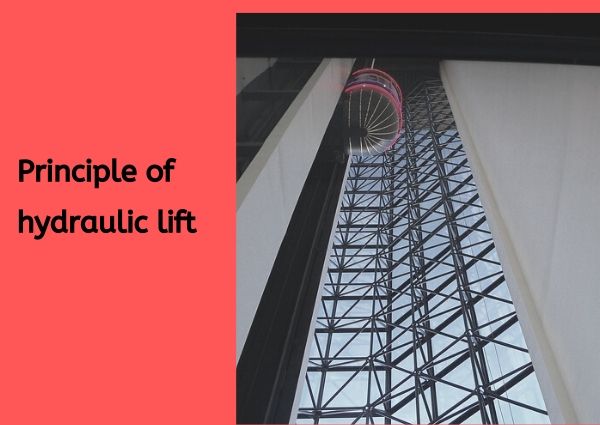Principle Of Hydraulic Lift
In the following, we’ll be discussing regarding a vital topic that’s “Principle of hydraulic lift” and will discuss it thoroughly within the article. The concept of an elevator is unbelievably easy — it’s simply a compartment attached to a lifting system. Tie a piece of rope to a box, and you have got a basic elevator.
Modern passengers, as well as freight elevators, are a lot more elaborate than this. They need advanced high-tech mechanical systems to handle the substantial weight of the elevator car as well as its cargo. Additionally, they have control mechanisms thus passengers can operate the elevator, and they need safety devices to keep everything running smoothly. There are 2 major elevator styles in common use today: hydraulic elevators and roped elevators. Hydraulic elevator systems lift a car using a hydraulic ram, a fluid-driven piston mounted within a cylinder. You can see however this system works in the diagram below. This content is not compatible with this device.Regarding this lift manufacturer in Delhi are given the best services.
The cylinder is actually connected to a fluid-pumping system (usually, hydraulic systems like this used oil, however other incomprehensible fluids would also work). The hydraulic system has three parts:
- A Tank (the fluid reservoir)
- A Pump, powered by an electric motor
- A valve between the cylinder as well as the reservoir
The pump actually forces fluid from the tank into a pipe leading to the cylinder. When the valve is opened, the pressurized fluid will take the path of least resistance and return to the fluid reservoir. But when the valve is closed, the pressurized fluid has nowhere to go except into the cylinder. As the fluid collects within the cylinder, it pushes the piston up, lifting the elevator car.
When the car approaches the right floor, the control system sends a signal to the electric motor to gradually shut off the pump. With the pump off, there’s no more fluid flowing into the cylinder, however, the fluid that is already in the cylinder cannot escape (it cannot flow back through the pump as well as the valve is still closed). The piston rests on the fluid as well as the car stays where it is.
To lower the car, the elevator system sends a signal to the valve. The valve is operated electrically by a basic solenoid switch (check out how Electromagnets Work for info on solenoids). When the solenoid actually opens the valve, the fluid that has been collected in the cylinder will then flow out into the fluid reservoir. The weight of the car and also the cargo pushes down on the piston that drives the fluid into the reservoir. The car gradually descends. To stop the car at a much lower floor, the control system actually closes the valve again. This system is incredibly easy and extremely effective, but it does have some drawbacks.



